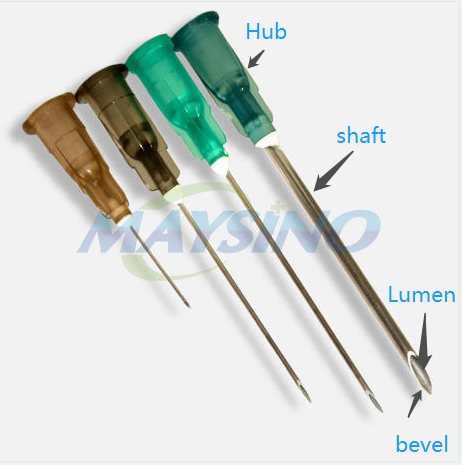- Español
- Português
- русский
- Français
- 日本語
- Deutsch
- tiếng Việt
- Italiano
- Nederlands
- ภาษาไทย
- Polski
- 한국어
- Svenska
- magyar
- Malay
- বাংলা ভাষার
- Dansk
- Suomi
- हिन्दी
- Pilipino
- Türkçe
- Gaeilge
- العربية
- Indonesia
- Norsk
- تمل
- český
- ελληνικά
- український
- Javanese
- فارسی
- தமிழ்
- తెలుగు
- नेपाली
- Burmese
- български
- ລາວ
- Latine
- Қазақша
- Euskal
- Azərbaycan
- Slovenský jazyk
- Македонски
- Lietuvos
- Eesti Keel
- Română
- Slovenski
- मराठी
- Srpski језик
Don't know how to choose a syringe? It's enough to read this article
2021-02-27
Different syringes have different ranges of use
Select the needle.
Most of us can recognize a syringe, a long plastic body with a needle in it. For many people, this is a childhood horror they will never forget. The early years may have been filled with horror shots, and as teens or adults may need to keep a supply of syringes ready to prescribe to the doctor. When starting your own family, you may need to provide ne
edles for family members to treat illnesses. In this case, it is important not only to forget the previous fear of this small medical device, but also to know how to use it. The bottom line is that not all syringes are the same. There are different designs that meet different purposes.
Types of syringes.
Syringes come in several different designs and varieties. Most are disposable, and most have extra needles or no needles. Syringe size can be selected based on the volume of medication installed.
Select a syringe.
The syringe is selected based on the volume of drug to be formulated and the required pressure flow rate. The barrel is marked with either a centimeter (cc) or milliliter (ml) volume. Both measurements are equal in volume. 1cc is the same as 1mL. Large volumes of drugs require larger syringe sizes. Lower pressure flow inches are required. Syringes for injection, for use with medical tubing, or for injection are also factors in syringe selection. The general type is the U-100 insulin syringe. It is a low volume syringe commonly used for diabetes medications. This syringe is only for single use and this is a low cost syringe.
Syringe tips.
There are five basic types of syringe tips. The first and most popular is the luer lock, where the needle can be removed and the needle reconnected. Cutting or connecting the needle is simple and quick. The needle hub can be locked onto the syringe needle by simply pressing the twist. The twisting motion locks the needle hub. This twist holder helps secure the needle to the syringe, improving safety and stability.
Slide-in syringes are also common. The user can push the needle hub onto the syringe. Friction keeps the needle bone at the front of the syringe. There is no locking feature like a luer lock.
The tube tip syringe helps to flush wounds and flush medical tubes. Medical manufacturers produce catheter tips with tapered ends that allow the catheter to slip at the tip.
Keywords:How to choose the right syringe
Description:How to choose the right syringe is a problem we often encounter, this article takes a closer look at the uses and differences of each syringe.
Don't know how to choose a syringe? It's enough to read this article
Select the needle.
Most of us can recognize a syringe, a long plastic body with a needle in it. For many people, this is a childhood horror they will never forget. The early years may have been filled with horror shots, and as teens or adults may need to keep a supply of syringes ready to prescribe to the doctor. When starting your own family, you may need to provide needles for family members to treat illnesses. In this case, it is important not only to forget the previous fear of this small medical device, but also to know how to use it. The bottom line is that not all syringes are the same. There are different designs that meet different purposes.
Types of syringes.
Syringes come in several different designs and varieties. Most are disposable, and most have extra needles or no needles. Syringe size can be selected based on the volume of medication installed.
Select a syringe.
The syringe is selected based on the volume of drug to be formulated and the required pressure flow rate. The barrel is marked with either a centimeter (cc) or milliliter (ml) volume. Both measurements are equal in volume. 1cc is the same as 1mL. Large volumes of drugs require larger syringe sizes. Lower pressure flow inches are required. Syringes for injection, for use with medical tubing, or for injection are also factors in syringe selection. The general type is the U-100 insulin syringe. It is a low volume syringe commonly used for diabetes medications. This syringe is only for single use and this is a low cost syringe.
Syringe tips.
There are five basic types of syringe tips. The first and most popular is the luer lock, where the needle can be removed and the needle reconnected. Cutting or connecting the needle is simple and quick. The needle hub can be locked onto the syringe needle by simply pressing the twist. The twisting motion locks the needle hub. This twist holder helps secure the needle to the syringe, improving safety and stability.
Slide-in syringes are also common. The user can push the needle hub onto the syringe. Friction keeps the needle bone at the front of the syringe. There is no locking feature like a luer lock.
Use an eccentric needle when you need to administer the drug parallel to the patient's skin. Use these needles if you want to inject the needle into a surface vein without the needle penetrating both vessel walls. It is also easy to aspirate liquid medications using this type of syringe.
The tube tip syringe helps to flush wounds and flush medical tubes. Medical manufacturers produce catheter tips with tapered ends that allow the catheter to slip at the tip.
The final needle is a syringe with a permanently attached needle. These devices are commonly used for low-dose applications and can reduce drug waste. They are also disposable after use, making cleaning easy. Tuberculin and insulin injections are popular for this syringe type.

Choose a needle.
Needles have a simple design with a hollow center, a sharp point and a hub that is fixed to the syringe. The length of the needle hub varies and is measured in gauges. The gauge size measures the thickness or diameter of the needle. Needle tips most commonly have beveled tips that provide easier severance or puncture. Many needles have caps to protect caregivers during the transition from package removal to needle use.

The three main considerations for choosing the right needle are needle size, length and use. Needle size measures the width or diameter of the needle. Length is the length from the center to the tip of the needle. Needle usage is how deep the tip of the needle must pass to reach the target injection area. These injection depths include intradermal (dermal injections), subcutaneous (subcutaneous tissue injections) and intramuscular (intramuscular injections).
Needle rules.
Needles are selected according to their size by considering the skin or dermis degree and the depth of injection. The needle number is a series of numbers; the lower the number, the wider the diameter of the needle. The higher the needle number, the smaller the needle width. On the other hand, the smaller the number, the larger the diameter or width. Needles with larger diameters have thicker walls and are stronger and more durable. They supply more viscous medication and support more intensive skin penetration. When using highly viscous drugs, lower needle sizes should be selected. Needles (smaller diameter) can reduce patient pain and accommodate low viscosity drugs. Higher needle gauges should be selected for these types of injections. The most common needle sizes are 26 and 27. This needle range is suitable for all three types of injections - intradermal, intramuscular and subcutaneous. For more information, please see the needle gauge range below.
Needle length.
Standard needle lengths range from 3/8" to 3-1/2". The location where the drug is administered determines the length of the needle required. In general, the farther the depth of the injection, the longer the needle. Intramuscular injections require a longer needle length. The needle length for intramuscular injections is typically 7/8 to 1-1/2 inches. Subcutaneous injections require 1/2 to 5/8 inch needles. Intradermal injections require a needle length of 3/8 to 3/4 inch. 1/2 and 5/8 inch needles are the two most common needle lengths and span both intradermal and subcutaneous injections.
When purchasing syringes, you must know which syringe you need. Are the syringes with needles you use for intradermal, intramuscular or subcutaneous injections? The choice of needle size and length varies for different injection methods. Here are the selection criteria for purchasing syringes and needles
The amount of drug to be injected determines the size of the syringe.
The type of needle hub used determines the syringe needle hub. (luer lock, slip needle, eccentric needle, or catheter needle)
The viscosity of the drug determines the needle size.
The injection position determines the needle number and needle length.
You must know your needs before you buy!
Click to view the Buy Needles page Welcome to Contact Us


